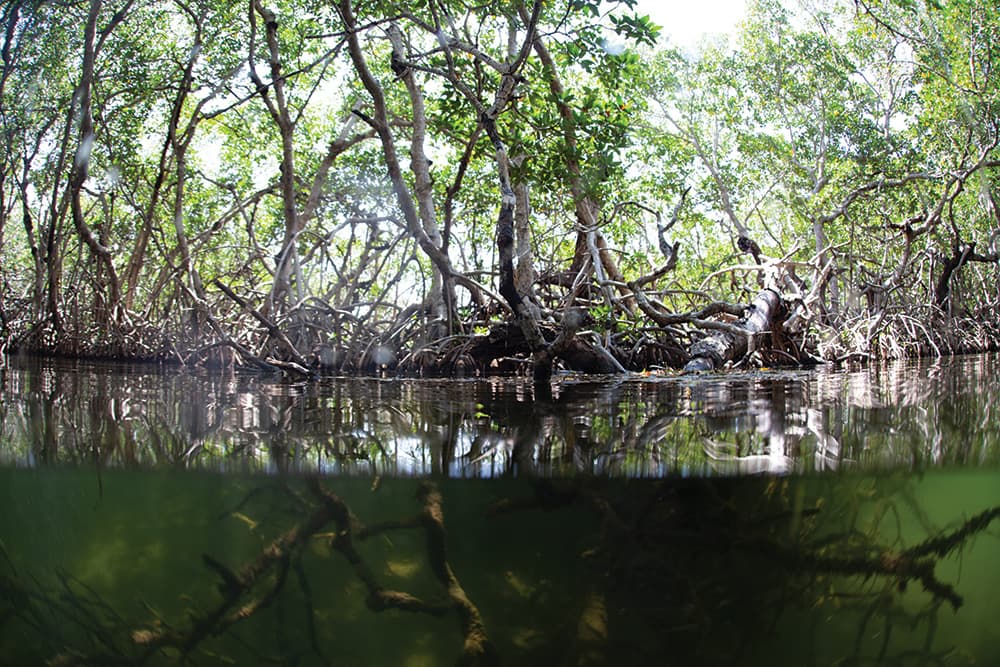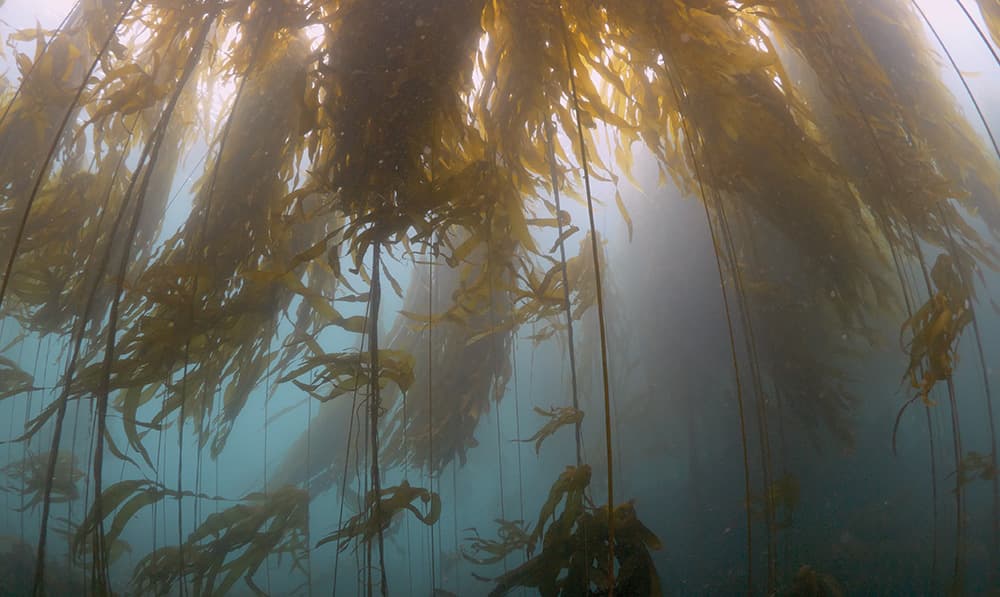Storing Blue Carbon
Blue carbon habitats, such as mangroves, seagrasses, salt marshes, and kelp forests, are coastal ecosystems that pull carbon out of the atmosphere and store it in vegetation and soil, sometimes for hundreds or thousands of years. These habitats play an important role in the fight against climate change, storing more carbon per area than land-based forests. Blue carbon ecosystems also provide a host of other benefits, serving as vital habitat for wildlife, providing coastal protection against storms and flooding, and helping to filter pollutants and other contaminants before they reach our waterways and ocean.


Many blue carbon habitats have been degraded or destroyed in the past century. Protecting and restoring large and continuous areas of these vital habitats ensures they will be around for decades to come.

